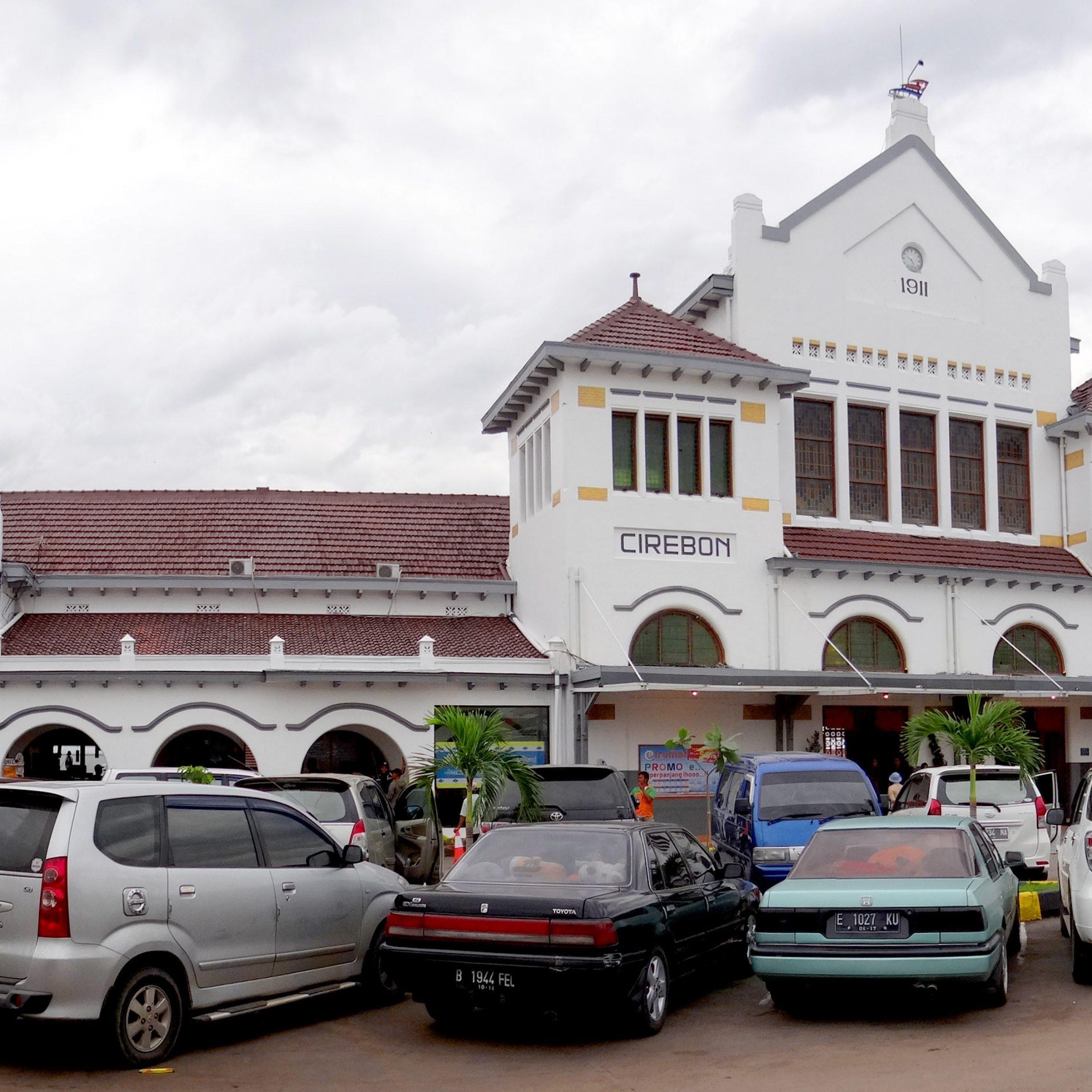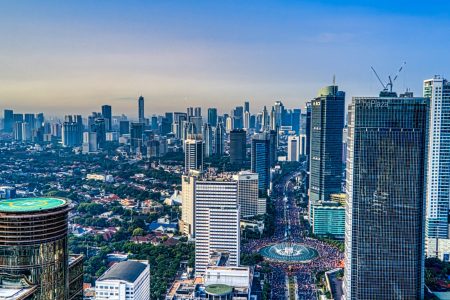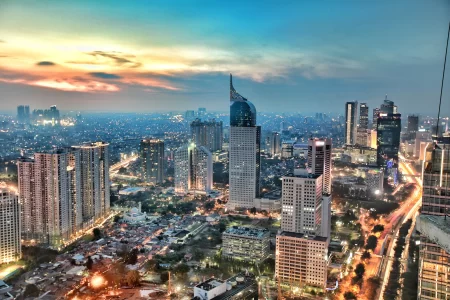Cirebon, located on the northern coast of Java Island in Indonesia, is a city steeped in history and cultural significance. Known for its vibrant arts, traditional crafts, and culinary delights, Cirebon offers a unique experience for travelers seeking to immerse themselves in Javanese culture. With its fascinating historical landmarks, exquisite architecture, and warm hospitality, Cirebon has emerged as a popular destination for both domestic and international tourists.
History & Culture: Cirebon has a rich historical background, dating back to the ancient Mataram Kingdom. It later became an important port city and a center of trade during the Islamic Sultanate of Cirebon in the 15th century. The city’s culture is heavily influenced by a blend of Javanese, Sundanese, and Islamic traditions. Cirebon is renowned for its distinctive art forms, such as Wayang Kulit (shadow puppetry) and Batik Trusmi (traditional batik fabric). The city’s architectural marvels, including the Keraton Kasepuhan (Palace) and the Great Mosque, showcase the grandeur of the Cirebon Sultanate.
Weather and Best Time to Visit: Cirebon experiences a tropical monsoon climate, characterized by warm temperatures and high humidity throughout the year. The best time to visit is during the dry season, which typically occurs from April to October. The weather is pleasant during these months, with less rainfall and cooler temperatures, making it ideal for exploring the city’s attractions and participating in outdoor activities.
How to Reach: Cirebon is conveniently accessible by various modes of transportation. Travelers can reach Cirebon by:
- Air: The nearest airport is Husein Sastranegara International Airport in Bandung. From there, visitors can take a taxi or private car to Cirebon, which is approximately a 3-hour drive.
- Train: Cirebon has excellent railway connectivity, with regular trains from major cities like Jakarta, Bandung, and Surabaya. The Cirebon Station is centrally located, making it easy to explore the city.
- Road: Cirebon is well-connected by road networks, and visitors can reach the city by buses, private cars, or taxis. The journey from Jakarta takes around 4-5 hours, depending on traffic conditions.
Local Transportation Available: Within Cirebon, travelers can utilize various modes of local transportation:
- Becak: These traditional cycle rickshaws are a popular way to explore the city’s narrow streets and alleys. Negotiate the fare before the ride.
- Angkot: Short for Angkutan Kota (city transportation), these minivans operate on fixed routes and are an affordable option for getting around Cirebon.
- Ojek: Motorbike taxis are readily available and provide a convenient and quick way to reach specific destinations.
- Taxi: Metered taxis and ride-sharing services are available in Cirebon, offering comfortable transportation within the city.
Must-Visit Tourist Attractions: Cirebon boasts a plethora of captivating tourist attractions that showcase its historical and cultural significance.
- Keraton Kasepuhan: The royal palace of the Cirebon Sultanate, known for its exquisite architecture and cultural heritage.
- Masjid Agung Sang Cipta Rasa: A grand mosque with a unique blend of Javanese and Islamic architectural styles.
- Batik Trusmi: A traditional batik village where visitors can witness the process of batik-making and purchase intricately designed fabrics.
- Taman Sari Gua Sunyaragi: An ancient garden complex featuring underground tunnels, water canals, and beautiful landscapes.
- Kraton Kanoman: Another magnificent palace showcasing Javanese architecture and royal history.
- Lawang Sewu: A historical building complex with a thousand doors, once used as the Dutch East Indies Railway Company’s headquarters.
- Kejawanan Beach: A scenic coastal area offering breathtaking views, water sports, and fresh seafood.
- Kacirebonan Market: A bustling traditional market where visitors can explore local produce, handicrafts, and culinary delights.
- Cirebon Waterland Ade Irma Suryani: A water park featuring thrilling slides, pools, and recreational activities for the whole family.
- Kasepuhan Palace Cultural Museum: A museum displaying various artifacts, traditional costumes, and cultural items of the Cirebon Sultanate.
- Sunyaragi Cave: An ancient cave complex with intricate architecture, hidden passages, and serene gardens.
- Kanoman Market: A vibrant traditional market known for its textiles, clothing, and traditional snacks.
- Cirebon Super Block: A modern shopping complex housing international and local brands, entertainment facilities, and dining options.
- Cirebon City Square: A lively public square offering a range of shops, restaurants, and entertainment venues.
- Keraton Keprabon: A historical palace with well-preserved structures and artifacts.
- Linggarjati Museum: A museum located in the former Linggarjati Conference building, showcasing the history of Indonesian independence.
- Ciremai Mountain: An iconic volcano and popular destination for adventurous hikers and nature enthusiasts.
- Cirebon Batik Museum: A museum dedicated to the art of batik, showcasing a wide collection of batik fabrics and techniques.
- Sangkanhurip Hot Spring: A natural hot spring known for its therapeutic properties and beautiful surroundings.
- Gua Sunyaragi: A cave complex featuring unique architectural elements, underground passages, and tranquil gardens.
Must-Do Activities: Apart from exploring the attractions, Cirebon offers a range of activities that allow visitors to immerse themselves in the local culture and experience the city’s charm. Attend Wayang Kulit Performance: Witness a traditional Javanese shadow puppet show and marvel at the intricate craftsmanship.
- Learn Batik-Making: Take a batik workshop to learn the art of creating intricate patterns on fabric.
- Taste Local Cuisine: Indulge in Cirebon’s culinary delights, such as Empal Gentong (beef soup), Nasi Jamblang (rice dish), and Tahu Gejrot (spicy tofu).
- Explore Traditional Markets: Wander through local markets like Pasar Harjamukti and Pasar Pagi for an authentic shopping experience.
- Visit Kota Intan Bridge: Take a stroll on the historic Kota Intan Bridge, an iconic landmark of Cirebon.
- Try Traditional Herbal Drinks: Savor traditional herbal beverages like Jamu and Bandrek, known for their health benefits.
- Attend a Traditional Dance Performance: Experience the grace and beauty of Javanese dance forms like Gambyong and Serimpi.
- Explore Kampung Batik Trusmi: Visit the village of Trusmi, known for its vibrant batik production and unique batik motifs.
- Relax at Gronggong Waterfall: Enjoy the tranquility and natural beauty of Gronggong Waterfall, located near Cirebon.
- Discover the Coastal Villages: Take a boat ride and explore the fishing villages along Cirebon’s coastline, interacting with the local community.
- Experience Sundanese Culture: Visit the neighboring region of Sundanese culture and enjoy its distinct traditions, music, and dance.
- Attend a Traditional Gamelan Performance: Listen to the enchanting melodies of the Gamelan, a traditional Javanese ensemble.
- Explore Kaliwulu Village: Visit Kaliwulu Village, known for its pottery industry, and witness the pottery-making process.
- Try Cirebonese Snacks: Sample local snacks like Tahu Susur, Rangginang, and Tahu Bletok, which are popular in Cirebon.
- Join a Traditional Cooking Class: Learn to prepare authentic Cirebonese dishes with the help of local chefs.
- Attend a Cultural Festival: Check the event calendar and participate in festivals like Sekaten and Grebeg Maulud, which celebrate Javanese traditions and Islamic heritage.
- Take a Heritage Walking Tour: Explore the old town area of Cirebon and admire the colonial architecture and historical landmarks.
- Enjoy a Spa Treatment: Relax and rejuvenate with a traditional Javanese massage or spa treatment, using natural ingredients.
- Go Fishing in Wulan Fish Lake: Engage in a fishing experience at Wulan Fish Lake and enjoy the serene surroundings.
- Witness Wayang Golek Performance: Watch the lively and animated performances of Wayang Golek, traditional wooden puppets.
Popular Food and Drinks: Cirebon is renowned for its flavorful cuisine, combining Javanese, Sundanese, and Betawi influences.
- Empal Gentong: A traditional beef soup cooked with rich spices and herbs.
- Nasi Jamblang: Fragrant rice served with a variety of side dishes, including fried chicken, meat, and vegetables.
- Tahu Gejrot: Deep-fried tofu served with a spicy and tangy sauce made from palm sugar, vinegar, and chili.
- Nasi Lengko: A dish consisting of rice, vegetables, tofu, and tempeh, served with peanut sauce.
- Doclang: Grilled or fried marinated chicken with a distinct Cirebonese flavor.
- Gado-Gado Cirebon: A mix of blanched vegetables, tofu, and tempeh, topped with peanut sauce and krupuk (crackers).
- Tahu Sumedang: Fried tofu originating from Sumedang, a city near Cirebon, served with a sweet and spicy sauce.
- Cirebonese Soto: A flavorful soup with rice noodles, chicken or beef, and a mix of spices.
- Tahu Petis: Fried tofu served with petis (shrimp paste sauce) and chili sauce.
- Dawet Ireng: A traditional Javanese drink made from coconut milk, black sticky rice, and palm sugar syrup.
Popular Restaurants and Bars: Cirebon offers a range of dining establishments where visitors can indulge in delicious cuisine and enjoy a cozy ambiance.
- Kampoeng Kopi Taman Sari: A coffee shop with a serene garden setting, serving various coffee blends and light snacks.
- Tahu Susur Bu Ros: A local eatery famous for its Tahu Susur (fried tofu with peanut sauce) and other Cirebonese dishes.
- Warung Nasi Ampera: A humble eatery offering a variety of Cirebonese dishes, including Nasi Jamblang and Empal Gentong.
- Soto Sam: A popular spot to savor authentic Cirebonese Soto (soup) and other local delicacies.
- Depot 368: A restaurant known for its tasty seafood dishes, including grilled fish and seafood soup.
- Warung Makan Ibu Suwarni: A cozy restaurant serving traditional Sundanese cuisine, such as Pepes Ikan and Sate Maranggi.
- Rumah Makan Sederhana: A casual restaurant offering a wide array of Indonesian dishes, including local favorites.
- The Sawah Terrace at Swiss-Belhotel Cirebon: A restaurant with a beautiful view of the paddy fields, serving Indonesian and international cuisine.
- Cirebon Resto and Grill: A restaurant specializing in grilled dishes, including seafood, chicken, and steaks.
- Bima Café & Lounge: A trendy café with a modern ambiance, serving coffee, desserts, and light bites.
Nightlife and Nightclubs: Cirebon’s nightlife scene is relatively relaxed compared to larger cities, but there are still options for those seeking some entertainment after dark. While the city doesn’t have bustling nightclubs, there are several bars and lounges where you can unwind and enjoy a drink. Here are a few popular nightlife spots in Cirebon:
- De Java Club: A lively bar and lounge offering live music performances and a variety of drinks.
- Cirebon Sky Lounge: A rooftop bar with a panoramic view of the city, perfect for enjoying the evening with a cocktail or mocktail.
- The Jetty Lounge: A waterfront lounge with a cozy ambiance, offering a selection of drinks and light snacks.
- The Siliwangi Resto & Bar: A restaurant with an attached bar, providing a relaxed atmosphere and live music.
- The D’Waterfront: A waterfront venue with dining options, live music, and occasional events.
Shopping Centers and Markets: Cirebon offers a mix of modern shopping centers and traditional markets where visitors can shop for souvenirs, local products, and everyday items. Here are a few popular shopping destinations in Cirebon:
- Cirebon Super Block: A modern shopping complex housing a range of retail stores, restaurants, and entertainment facilities.
- Grage Mall Cirebon: A shopping mall with a variety of local and international brands, as well as a cinema and food court.
- Kacirebonan Market: A traditional market where visitors can find local produce, traditional crafts, batik fabrics, and Cirebonese snacks.
- Pasar Harjamukti: A bustling market known for its fresh produce, spices, and traditional Javanese products.
- Pasar Pagi: A vibrant morning market offering a wide range of goods, including fruits, vegetables, clothes, and household items.
Museums and Educational Institutions: Cirebon is home to several museums and educational institutions that provide insights into the city’s history, art, and culture. Here are a few notable ones:
- Cirebon Batik Museum: A museum dedicated to showcasing the art of batik-making, featuring a collection of batik fabrics and tools.
- Kejawanan Traditional House Museum: A museum housed in a traditional Javanese house, displaying cultural artifacts and traditional household items.
- Linggarjati Museum: A museum located in the former Linggarjati Conference building, highlighting the history of Indonesian independence.
- Pangeran Diponegoro National Heroes Museum: A museum dedicated to Prince Diponegoro, a national hero, showcasing his life and struggle for independence.
- Sunan Gunung Jati Museum: A museum dedicated to Sunan Gunung Jati, one of the nine Muslim saints of Java, exhibiting relics and historical artifacts.
Safety for Tourists and Do’s & Don’ts: Cirebon is generally a safe city for tourists, but it’s always important to take precautions. Here are some safety tips and do’s & don’ts for travelers visiting Cirebon:
- Do take care of your belongings and avoid displaying valuable items in public.
- Do dress modestly, especially when visiting religious sites and cultural attractions.
- Do carry a copy of your identification documents, passport, and emergency contact numbers.
- Do use reputable transportation services or taxis, especially when traveling at night.
- Do try to learn a few basic Indonesian phrases to communicate with locals.
- Don’t wander alone in unfamiliar or poorly lit areas at night.
- Don’t drink tap water. Stick to bottled water or boiled water.
- Don’t engage in illegal activities or purchase prohibited items.
- Don’t disrespect local customs, traditions, or religious practices.
- Don’t forget to negotiate prices at traditional markets to get a fair deal.
Environment and Sustainable Tourism: Cirebon is becoming increasingly aware of the importance of sustainable tourism and preserving its natural and cultural heritage. Efforts are being made to promote eco-friendly practices and responsible tourism. Visitors can support sustainable tourism in Cirebon by:
- Choosing eco-friendly accommodation options that prioritize sustainability and minimize environmental impact.
- Respecting the local flora and fauna by not littering and avoiding activities that harm the ecosystem.
- Supporting local artisans and craftsmen by purchasing locally made products and handicrafts.
- Being mindful of water and energy consumption in hotels and other accommodations.
- Participating in community-based tourism initiatives that promote cultural exchange and provide economic benefits to local communities.
- Opting for guided tours and activities that educate visitors about the importance of preserving Cirebon’s natural and cultural heritage.
- Following designated trails and guidelines when exploring natural attractions to minimize damage to the environment.
General Information: Here is some general information that may be useful for travelers visiting Cirebon:
- Language: The official language is Indonesian. English is spoken to some extent in tourist areas.
- Religion: The majority of people in Cirebon practice Islam.
- Population: The population of Cirebon is approximately 330,000.
- Holidays: Indonesia celebrates various public holidays, including religious festivals such as Eid al-Fitr and Eid al-Adha, as well as Independence Day on August 17th.
- Water: It is advisable to drink bottled water or boiled water.
- Electricity: The standard voltage is 220-240V, and the frequency is 50Hz. The power plugs used are Type C and Type F.
- Mobile and Internet: Mobile network coverage is generally good in Cirebon, and internet access is available in hotels, cafes, and shopping centers.
- Health Services: Cirebon has several hospitals and medical clinics that provide healthcare services to both residents and tourists.
- Postal Service: Post offices are available in the city, and international shipping services are also available.
- Suitable Clothing: Dress modestly, particularly when visiting religious sites. It is recommended to wear lightweight and breathable clothing due to the tropical climate.
- Banks: Cirebon has various banks and ATMs where visitors can withdraw cash and exchange currency.
Conclusion || Cirebon
In conclusion, Cirebon is a city in Indonesia that offers a rich blend of history, culture, and natural beauty. From its magnificent palaces and historical landmarks to its vibrant markets, delicious cuisine, and warm hospitality, Cirebon has much to offer for travelers seeking an authentic Indonesian experience. Whether exploring the city’s heritage, indulging in local delicacies, or immersing in traditional activities, Cirebon promises a memorable journey filled with unique sights, flavors, and encounters. Visitors can enjoy the charm of this city while respecting its culture, environment, and local communities, making their visit to Cirebon a sustainable and rewarding travel experience.
Book Your Flights : Here 30% OFF on Booking
Book Your Hotels : Here 20% OFF on Booking






0 Comment